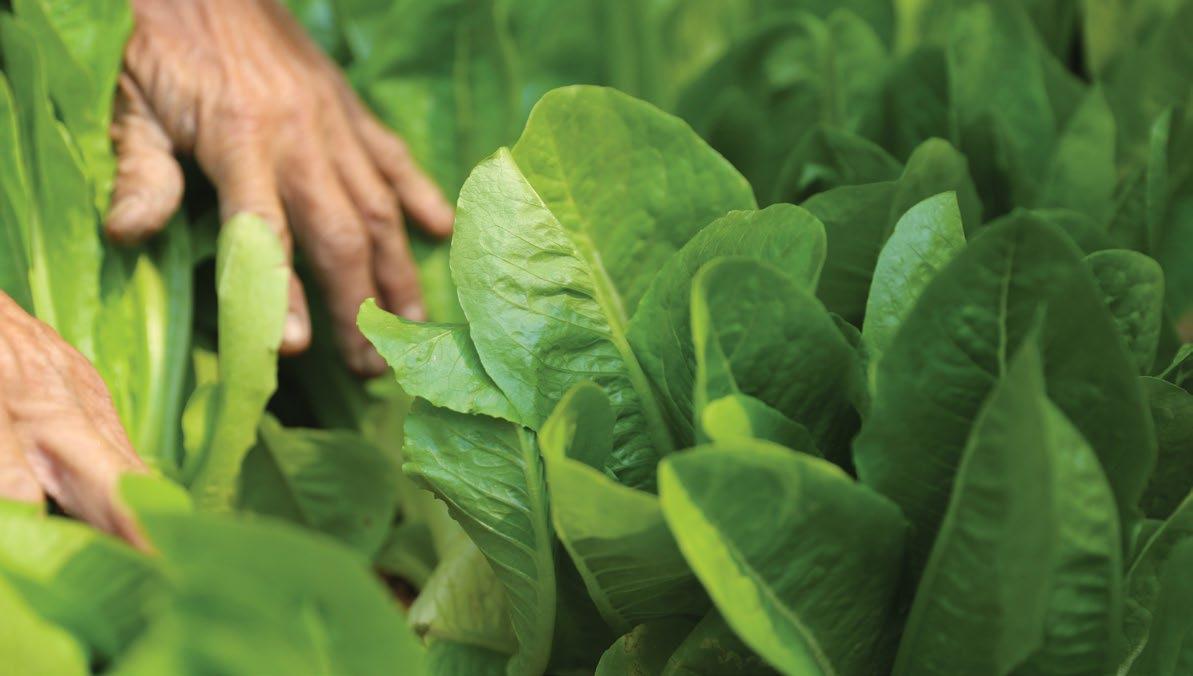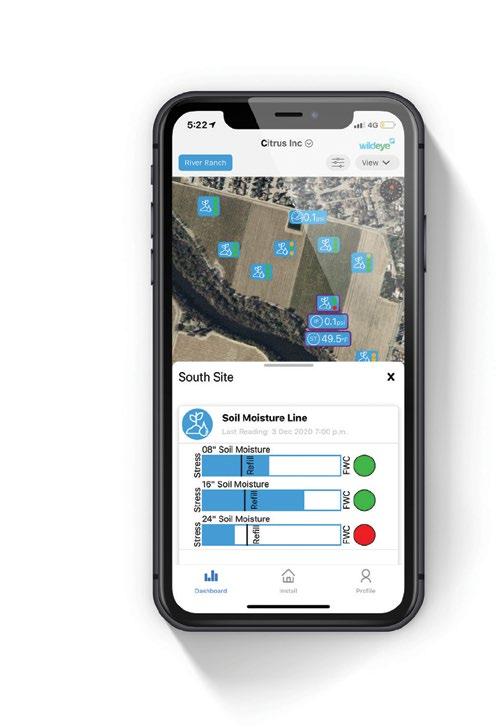
7 minute read
Reducing food safety risks
Reducing food safety risks from manures

Advertisement
Food safety programs do not restrict use of manures if they have been treated.
3 THE best option for reducing risk is to use only manures that have been thoroughly composted
Manures have been thoroughly composted. Heat generated used to improve during composting kills human pathogens present in the manure, along agricultural soil with weed seeds and plant diseases. fertility for over 7,000 years. Food safety programs do not Manures add nutrients and restrict use of manures if they organic matter, increase soil have been treated. That is, bulk density, enhance structure and water holding capacity and composted in accordance with Australian Standard 4454. increase biodiversity. A key requirement is that the materials must heat to >55ºC for at least three Unfortunately, manures can contain pathogenic bacteria such as Escherichia coli (E. coli), Salmonella spp., Listeria monocytogenes, Campylobacter spp., Yersinia enterocolitica days, with five turnings to ensure all of the materials are thoroughly composted. If materials are not certified, they are considered the same as untreated manure. and others. Even a small dose of some of these human pathogens — particularly some species of Salmonella and types of E. coli — can cause severe illness and even death. Untreated manures used to grow vegetables can contaminate food with these bacteria. Reducing risk — withholding periods Most human pathogens do not survive for extended periods in soil. Many food safety standards mandate withholding periods Untreated manures used to grow vegetables can contaminate food with these bacteria. Contamination may occur directly through contact between vegetables and manureamended soil, or indirectly if manures contaminate water used for irrigation or between application of untreated (or semi-treated) manures and harvest. These time intervals are intended to allow human pathogens in soil or on plant surfaces to return to normal environmental levels. crop sprays. However, die off rates are hard to Reducing risk — composting predict, being affected by temperature, soil type, soil moisture and many other The best option for reducing risk is environmental factors. For this reason, to use only manures that have been withholding periods between application of manure and harvest are both variable and conservative, assuming a ‘worst case’ scenario. The Guidelines for Fresh Produce Food Safety and Freshcare both stipulate a 90-day withholding period for products that are grown in or close to the soil and may be eaten uncooked, and 45 days for other (low risk) products. However, other schemes mandate longer periods: • GLOBALG.A.P. — 60 days between application and harvest for tree crops, but 60 days between application and planting for vegetable crops • USDA — 120 days/90 days for high and low risk products respectively • HARPS — 365 days if the harvestable part of the crop is grown in or within 1m of the ground or is harvested from the ground, and may be eaten uncooked • The Fresh Salad Producers group — 365 days withholding period • The California Leafy Greens
Marketing Agreement prohibits all use of manures.
Why 90/45 days?
Withholding periods are based on an overview of die off rates published in the scientific literature. However, most studies have focussed on Europe and North America, with results varying widely by environment and agricultural practices.
3 THE project examined how quickly populations of human pathogens return to environmental levels when added to sandy or clay loam soil in cos lettuce crops.


E. COLI (LOG CFU/G SOIL)
5
4
3
2
1
0
0
Cattle manure Poultry litter
10 LIMIT OF DETECTION
20 30 DAYS AFTER MANURE INCORPORATED
40 50
FIGURE 1. AVERAGE POPULATIONS OF E. COLI IN SOIL AMENDED WITH CATTLE MANURE OR POULTRY LITTER. DATA COMBINED FROM SANDY AND CLAY LOAM SOIL. VALUES MODELLED FROM THREE SEPARATE CROPS. BARS INDICATE 95 PER CENT CONFIDENCE INTERVALS.
The project Pathogen persistence from paddock to plate (VG16042) has examined how quickly populations of human pathogens (E. coli, Salmonella spp. and Listeria spp.) return to environmental levels when added to sandy or clay loam soil (see Figure 1). Cattle manure and fresh poultry litter with added human pathogens (E. coli, Salmonella hofit and Listeria innocua) were incorporated into the soil at a high rate (20t/ha) at the start of spring (trial A), summer (trial B) and autumn (trial C) crops of cos lettuce. Populations of E. coli in soil amended with poultry litter fell below the level of detection (10CFU/g) within 50 days in all three trials, indicating a mortality of over 99.9 per cent. Although die off was extremely rapid in soil amended with cattle manure in trials A and B, the bacteria survived longer when it was added to soil in trial C. Modelling the data indicated that, after 50 days, E. coli would be at or below the level of detection in all seasons. Salmonella spp. populations also declined rapidly after addition to soil, with the bacteria undetectable after 50 days in summer and autumn trials. However, the bacteria survived significantly longer during trial A; although the population was too low to count, there was still a 50 per cent probability of detection in 25g of soil after 50 days.
3 WHILE soil contamination affects risk, it is the presence of human pathogens on harvested product that matters most.
Listeria spp. proved the most persistent. Species of Listeria, including the L. innocua used in this trial, can survive in soil for extended periods. In trials A and C, approximately 50 per cent of plots were still positive for this bacteria 50 days after it was added to the soil. While soil contamination affects risk, it is the presence of human pathogens on harvested product that matters most. To simulate a ‘worst case’ scenario, mature lettuce were tested with the dirty outer leaves still attached. E. coli was rarely detected (0.25 per cent of samples) on lettuce grown with manure, and Salmonella spp. was not detected. However, Listeria spp. was detected on three lettuce in the trial C.
Conclusions
In these three trials, high initial populations of E. coli and Salmonella spp. in soil fell below or close to detectable levels within 50 days of application. However, the results must be considered cautiously. The trials were conducted in a single location over a relatively short time period. Moreover, Listeria innocua persisted in the soil during two out of three cropping cycles. This does not necessarily mean that the human pathogen L. monocytogenes would also survive under these conditions, but does demonstrate the variability in microbial populations.
While human pathogens in soil are potential contaminants, it is their presence on the harvested product that is most important. Even though lettuce were tested with soil attached, E. coli and Salmonella spp. were rarely found. Despite this, detections of Listeria spp. on a number of lettuce does raise concerns. There is zero tolerance for L. monocytogenes on harvested produce, so any detection will trigger a product withdrawal. Moreover, if this lettuce was processed then stored, initially small populations of bacteria could potentially multiply, creating a significant food safety risk.
Recommendations
The best way to reduce risk from manures is to only apply products that have been treated (e.g. composted in accordance with AS4454) to kill any human pathogens present High temperatures, dry conditions and other environmental factors reduce survival of human pathogens in soil, but effects are variable Withholding periods between application of manure and harvest provide an alternative method to reduce risk: — In these trials, populations of E. coli and Salmonella spp.
consistently fell to barely detectable levels within 50 days after addition to soil — Populations of Listeria spp. can potentially survive longer than 50 days The length of withholding periods used will therefore depend on: — Whether the product is grown in or close to the soil and may be eaten uncooked (i.e. high risk) — On-farm risk assessments — Customer mandated requirements
This project has been funded by Hort Innovation using the vegetable research and development levy and funds from the Australian Government. For more information on the fund and strategic levy investment visit horticulture.com.au

Disclaimer: Hort Innovation (HI), Applied Horticultural Research Pty Ltd (AHR), Fresh Produce Safety Centre (FPSC), Freshcare (FC) and the University of Sydney (USyd) make no representations and expressly disclaims all warranties (to the extent permitted by law) about the accuracy, completeness, or currency of information in this fact sheet. Users of this material should take independent action before relying on its accuracy in any way. Reliance on any information provided by HI, AHR, FPSC, FC or USyd is entirely at your own risk. HI, AHR, FPSC, FC and USyd are not responsible for, and will not be liable for, any loss, damage, claim, expense, cost (including legal costs) or other liability arising in any way (including from HI, AHR, FPSC, FC or USyd or any other person’s negligence or otherwise) from your use or non-use of information from project VG16042 Pathogen Persistence from Paddock to Plate or from reliance on information contained in this material or that HI, AHR, FPSC, FC or USyd provides to you by any other means.
1300 WILDEYE info@mywildeye.com www.mywildeye.com












